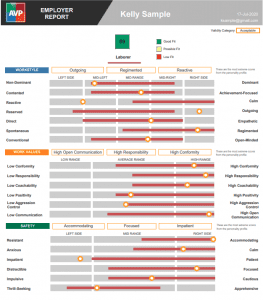For many reasons, even the best employees can hit a slump at work. We’re human after all! But what about employees who underperform for weeks, or even months on end? Leaders and managers may understand when their top performers have a bad day and trust that they may get themselves back on track, but other underperforming employees might need help to start achieving performance goals.
Understanding the cause of an employee’s underperformance is the first step for managers and leaders to address the issue and assess the potential for a successful turn-around. Take a look at three ways to understand and increase performance of underperforming employees:
1. Assess Employee Engagement (for ALL employees)
Employers need to understand the causes of underperformance in order to create steps to address it. Assessing engagement is an important way to understand more about the employee’s environment and organizational context at play. Looking beyond just one individual, by surveying your whole team, you can learn about your workforce’s sentiments towards the organization and how employee perceptions of factors such as leadership support, values alignment, or frustration with growth opportunities may impact their ability to thrive. These insights can lead to actions that support all employees.
| Increased Employee Engagement can lead to 17% higher workforce productivity (source) |
2. Understand Job and Organizational Fit (Top-Performing Benchmarks)
One of the most common reasons for underperformance is poor job fit.
| Job Fit is the likelihood that someone aligns well with the daily tasks and requirements of the role. |
Job fit is essential for an employee’s job performance and satisfaction. If an employee’s personality and behavior are not well suited for the role, they are less likely to succeed. Understanding job fit before an employee even starts in a position is a great way to mitigate the risk of underperformance. Benchmarks help identify the key strengths and personality traits needed to be a top performer in a specific role. Behavioral assessments with top-performing benchmarks can show you at a glance how an employee fits the role and provide management tips to help offset any gaps. This is a great place to start when working with underperforming employees to truly understand if they have the potential to succeed in the role.
3. Personalize Training & Development (No more one-size-fits-all)
Maybe the employee is engaged, and the right fit. What now? Lack of effective, personalized training is another major cause of underperformance. A one-size-fits-all approach to training and development simply can’t meet the needs of every individual on the team. And a more personalized experience is the expectation these days – though customizing a training and performance program per employee can seem very daunting and time-consuming. However behavioral assessments that offer employee self-insights with Participant Reports can be a great tool for employees to gain self-awareness and understand their own strengths and areas for development. These reports empower employees in a personalized way and provide a great basis for mentor-mentee discussions to help struggling employees feel valued and supported.
A multitude of factors can cause underperformance in employees. As leaders, it is important to reflect on organizational engagement, job fit, and personalized employee development before building an action plan to help your underperforming employees to reach their performance goals.
Start assessing job fit and supporting your employees today!











